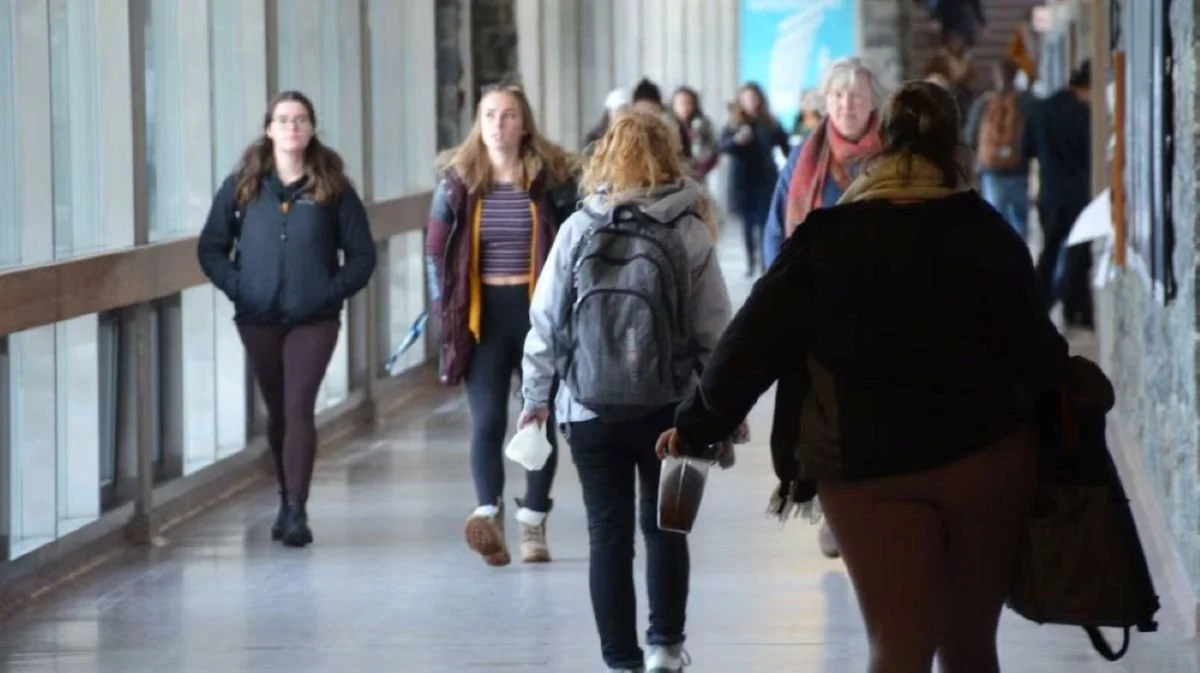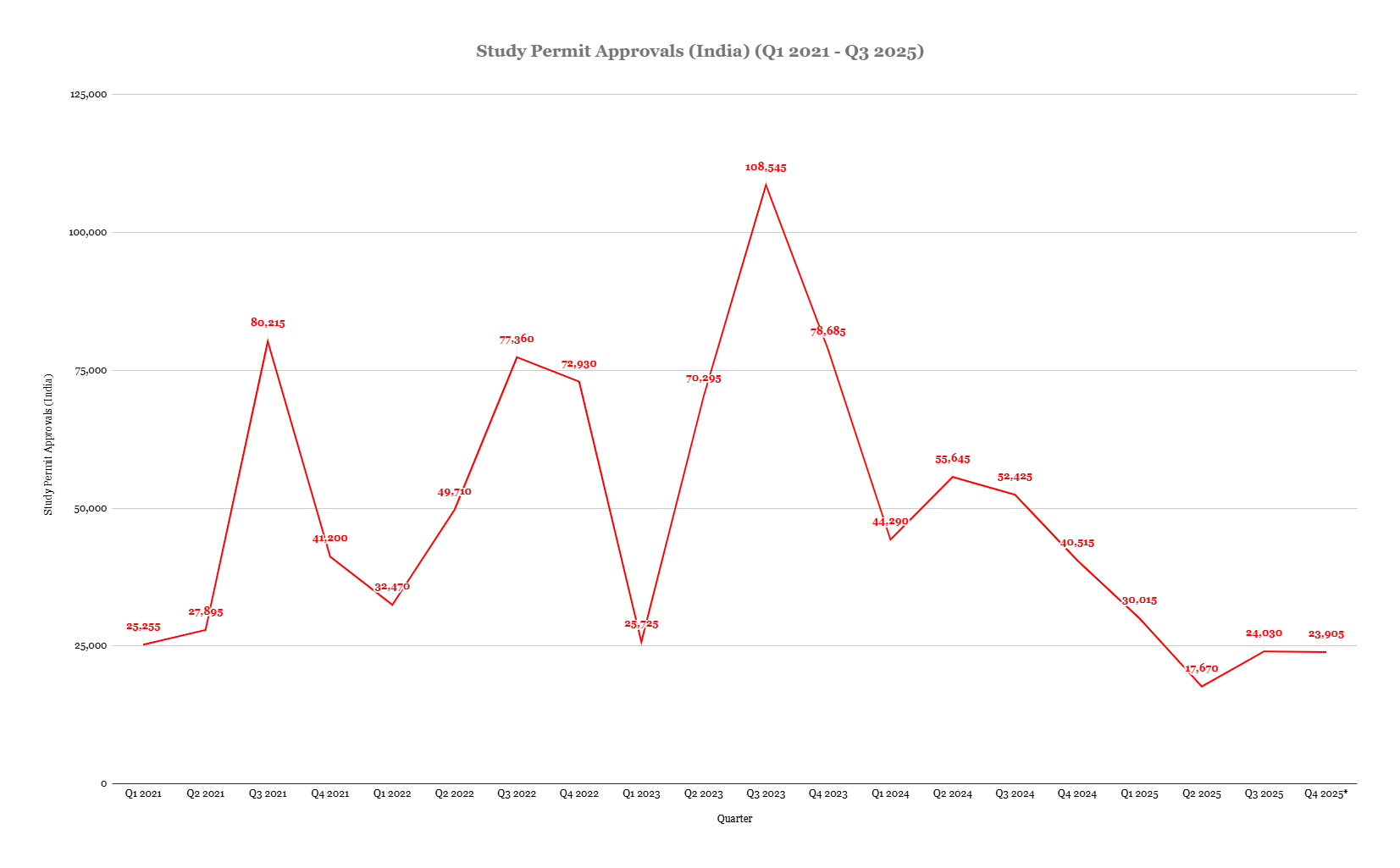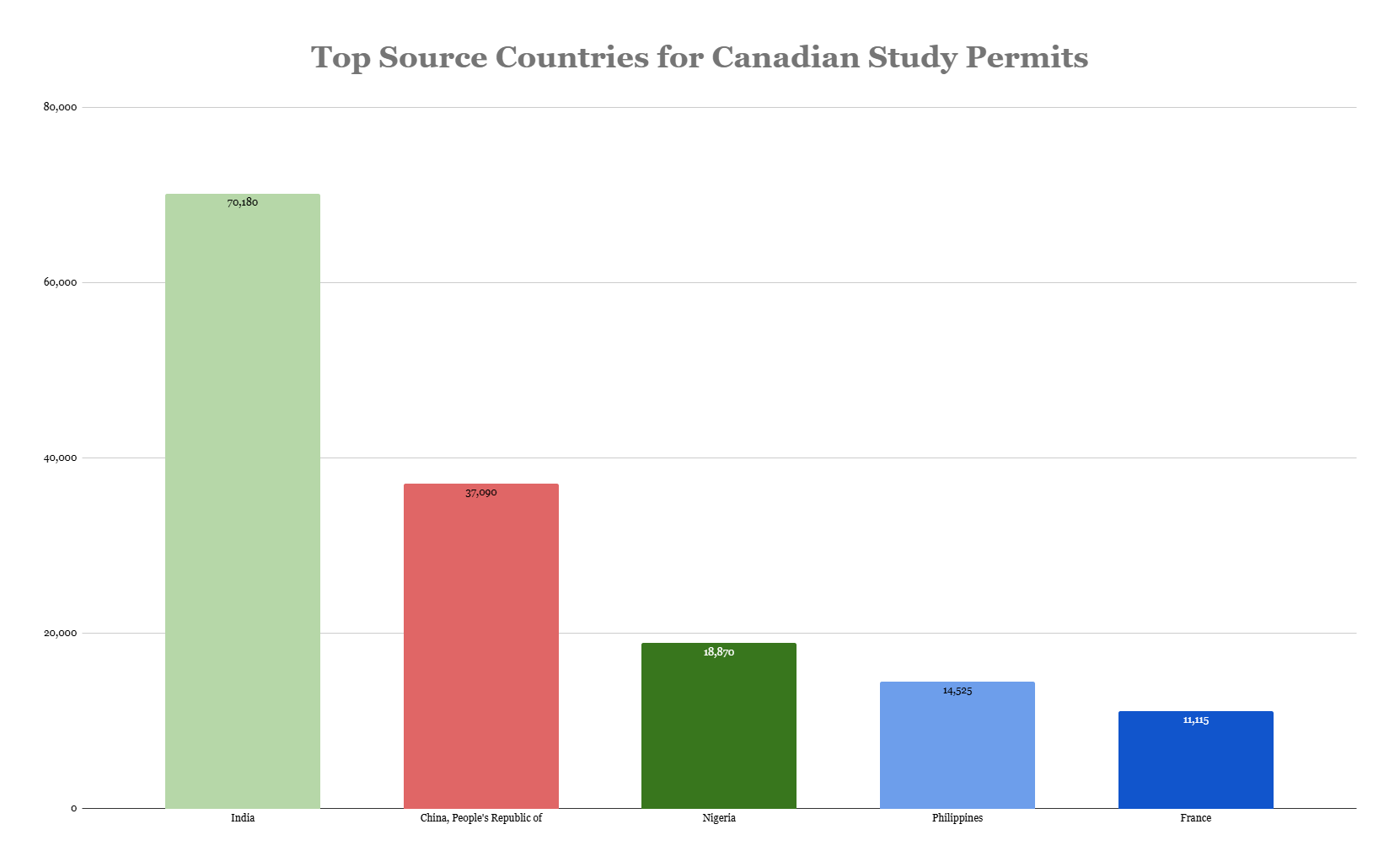Canada issues over 50% fewer study permits to Indians
(Image courtesy of CBC)
The number of study permits granted to Indian students is set to decline by half compared to this time last year.
50 percent drop
So far, according to immigration data released by the federal government, only 70,180 Indian citizens have been granted approvals for study permits in 2025. This time last year, 152,360 Indians were granted study permits.
Information courtesy of Immigration, Refugees and Citizenship Canada.
However, despite these decreases, Indians were still, by far, the biggest group to receive study permits. So far, a little over 70,000 Indians have received study permits for 2025, followed by China at 37,000, Nigeria, the Philippines, and France. India, so far, makes up about a quarter of all granted study permits for this year. Last year, they made up over a third.
Information courtesy of Immigration, Refugees and Citizenship Canada.
BC post-secondary institutions facing cutbacks
In response to these cuts in admissions, many schools in the Lower Mainland that have taken advantage of the international student influx have started to scale back their operations. At KPU, a popular institution for Indian students in Surrey, 20 vacant positions have been cut, with that number expected to jump to 45 full-time positions by March 2026.
There has also been fraud within the study permit program itself. According to Reuters, in 2023, Canadian authorities uncovered almost 1,550 study permit applications connected to fraudulent acceptance letters, most of which came from India. In 2024, an improved screening system detected 14,000 cases of fraud, raising concerns not just about educational attainment but also national security.
Immigration remains a key issue
A recent poll by Environics Institute found that 56 percent of Canadians believe the country accepts too many immigrants. The Canadian government also seems aware of this public sentiment, with a federal auditor general planning a probe of Canada’s international students program. Its findings are expected to be published in 2026.




